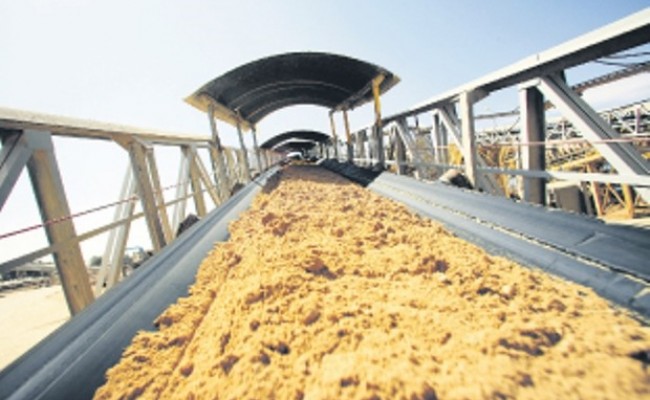RECYCLED PHOSPHORUS FOR CANADA’S ORGANIC FARMING —- Organic farm systems are often phosphorus-deficient and recycled nutrients could help address this, e.g. insect frass (from processing food waste), struvite from municipal wastewater or food waste digestate, a study entitle “Recycled Nutrients as a Phosphorus Source for Canadian Organic Agriculture: A Perspective” concluded. Earlier research has showed that organic farms tend to be phosphorus deficient, especially when relying on BNF = Biological Nitrogen Fixation. Insect frass (waste from insect production) from insects fed food waste and food waste digestate are both approved for Organic Farming in Canada. Struvite from livestock manure or from plant wastes is approved, but not struvite from sewage. Several studies have demonstrated that insect frass can be an effective fertilizer (although high doses may inhibit plants, possibly because of ammonium levels), but further research is needed into frass from insects fed other materials. Food waste digestate have also been shown to be effective fertilizers, with improvement possible by post-digestion processing. Many studies show the fertilizer effectiveness of struvite. However, this potential for recycled phosphorus is considerably greater than current needs of Canada’s Organic Farms, but with the need to redistribute from populated to agricultural regions. The authors conclude that incorporating recycled nutrients into agriculture is essential for food security and sustainability and could contribute to ameliorating phosphorus deficiencies in Organic Farming. Barriers to uptake by Organic farmers are likely to be supply availability of recycled fertilizers, logistics / transport and cost.
STRUVITE TESTED FOR USE IN HYDROPONICS —- Lab tests show that struvite is an effective fertilizer for use in hydroponics, applied as granules in the perlite substrate for French beans, according to an scientific article entitled “Recovered Phosphorus for a More Resilient Urban Agriculture: Assessment of the Fertilizer Potential of Struvite in Hydroponics”. Struvite was tested by a group of researchers at various rates ranging from 1 to 20 g of struvite per plant and compared to soluble mineral phosphorus (P) fertilizer in the hydroponic nutrient solution. The pH of the hydroponic solution in the struvite tests was approximately 7. Results show that struvite at > 5 g/plant resulted in better initial plant growth than the dissolved mineral P fertilizer, as well as higher bean crop yield and considerably lower P losses to the hydroponic leachate (nearly 70% of the dissolved mineral P fertilizer was lost to leachate). The authors suggest that the higher initial growth may be related to the ammonia N content of the struvite (released as needed by the plants). They conclude that these tests show that struvite granules are a potentially effective P fertilizer for hydroponics. … In a previous study, also using struvite similarly for bean tests, nitrogen in the hydroponic nutrient solution was substituted by rhizobium inoculation. This led to a 50 – 60 % bean yield reduction although the combination of both struvite and rhizobium seemed to be compatible and promising for further research.
SSIA IN FERTILIZER PRODUCTION —- Significant inputs over the long term of SSIA replacing phosphate rock in fertilizer production could decrease the solid / soil solution partitioning of copper, nickel and lead, according to the authors of the study entitled “Producing Superphosphate with Sewage Sludge Ash: Assessment of Phosphorus Availability and Potential Toxic Element Contamination”. They conducted lab tests, in which 25% of phosphate rock was substituted by SSIA in superphosphate production, showing no difference in fertilizer effectiveness in maize pot trials and no impact on heavy metal levels in the plant. The sludge ash was from the Sülzle Kopf gasification process and had total P of 9.9%, compared to 11.8% P in the phosphate rock used (sedimentary, Israel). Superphosphate was produced by dissolving either 100% phosphate rock, or 75% rock + 25% SSIA, in 95% sulphuric acid. The superphosphate using 25% SSIA showed slightly higher cadmium and nickel levels compared to that from phosphate rock only, slightly lower chromium, significantly higher lead and very much higher (order of magnitude) copper and zinc. 10-week pot trials with maize, in a low-P soil, pH 5.2, tested the two superphosphates, struvite (Stuttgart process), the SSIA, the phosphate rock and a control (no P fertilizer). The pot trials showed the highest maize biomass production with struvite, high and the same between the two superphosphates, but significantly lower with rock phosphate and even lower with sewage sludge incineration ash. None of the heavy metals were significantly different with superphosphate using SSIA (or struvite) compared to superphosphate from rock.




